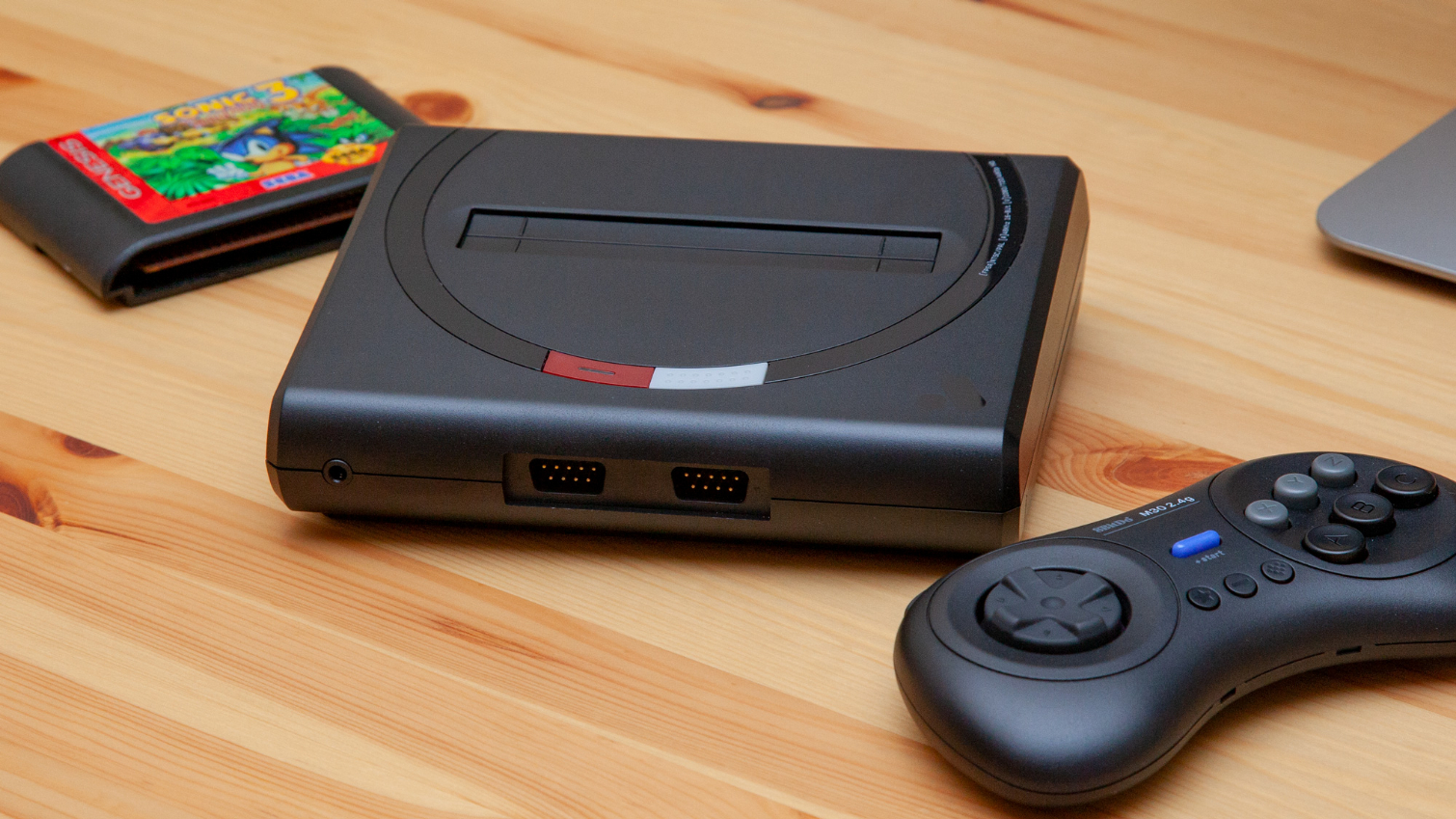Tom's Guide Verdict
The Mega Sg is a luxurious, meticulously crafted Genesis/Mega Drive for the modern era and by far the best way to play Sega's 2D classics today. However, you'll pay a high price for the accuracy it provides, and its lack of such modern conveniences as save states won't make it the perfect solution for everyone.
Pros
- +
Gorgeous design
- +
Accurate performance
- +
Smooth interface
- +
1080p resolution
- +
Extensive display options
- +
Unreleased title Ultracore included
- +
Support for Master System and Sega CD
Cons
- -
Relatively expensive
- -
No controller
- -
No save states or digital game storage
- -
No 32X support
Why you can trust Tom's Guide
I grew up in a Sega household. That's not to say we had only one console growing up; my family was quite well off, and my brothers were much older and working, so we owned all three major platforms in the late '90s. But Sega's were always our favorite.
So when boutique gaming hardware maker Analogue released the Super Nt last year — a HD-compatible, fully re-engineered Super Nintendo for the modern era — I was delighted with the result but jealous. Most of Nintendo's best titles have already been distributed on multitudes of other platforms, countless times. Today, you can easily walk into any big box retailer and pick up a miniaturized NES or SNES, packed with a curated selection of some of the finest games ever made, for well under $100. Nintendo makes it very easy to be nostalgic.
Sega's contributions to the medium, conversely, have never been celebrated with quite the same care or enthusiasm. Until now.
Analogue's Mega Sg is a $189 Sega Genesis/Mega Drive that can play all the system's original cartridges at full-HD resolution. It supports the very same controllers, bears a striking similarity to the original box, yet is much smaller and sleeker. And, it will even work with a Sega CD if you happen to still have one of those lying around (and it hasn't disintegrated with the passage of time).
The Mega Sg is the finest, most convenient way to play Sega Genesis on a modern TV.
In short, the Mega Sg is to the Genesis what Analogue's Super Nt was to the SNES. Only, it matters a whole lot more, because there's never been a better way to revisit Sega's 16-bit masterpieces.
Grown up, shrunk down
Sega produced multiple revisions of the Genesis hardware throughout the '90s, and the Mega Sg looks sharper than just about all of them.
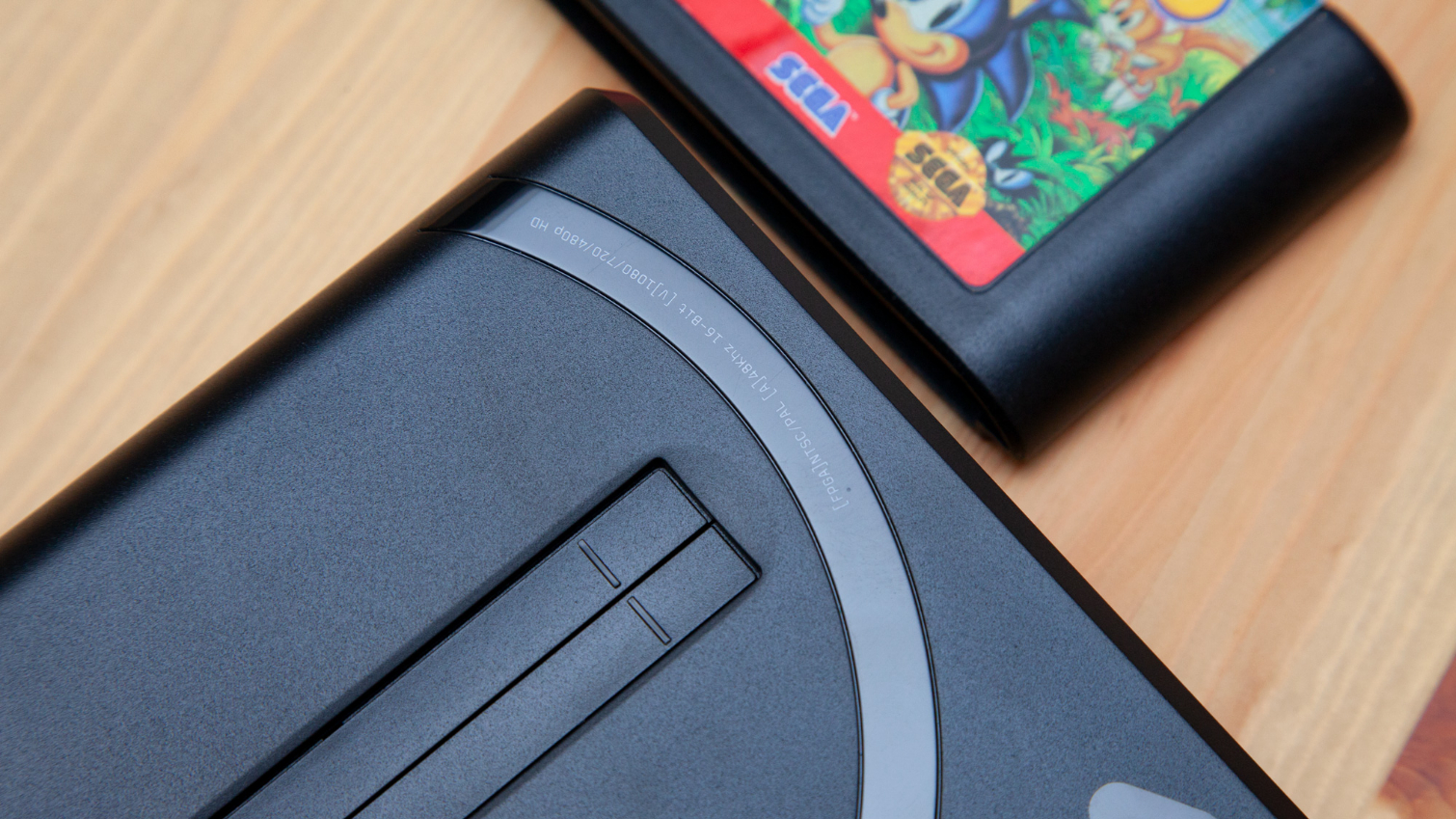
Sure, that's not a totally fair comparison to make nearly three decades after the system's launch. But the Model 1 Genesis always had a cool but garish '90s futurism about it, and the Mega Sg repurposes those dated design cues into a minimalist, elegant wedge that fans will be proud to display, either under a TV or on a desk.
Get instant access to breaking news, the hottest reviews, great deals and helpful tips.
At 6.6 inches wide and 5.4 inches long, the Mega Sg is a fair bit larger than Nintendo's SNES Classic. Yet, while the SNES Classic is mostly an empty (yet adorably accurate) shell of a console filled with a circuit board and a whole lot of air, the Mega Sg has a heft to it that exudes quality.
Mega Sg repurposes the Genesis' design cues into a minimalist, elegant wedge.
The plastics are top-notch, cartridges slide in with appropriate force for a solid, snug fit, and the power LED — inset within a glossy black ring with markings not unlike the silly High Definition Graphics label on the original Genesis — can even be adjusted to cycle through the RGB spectrum or mimic the color of the center pixel of whatever game you're playing.
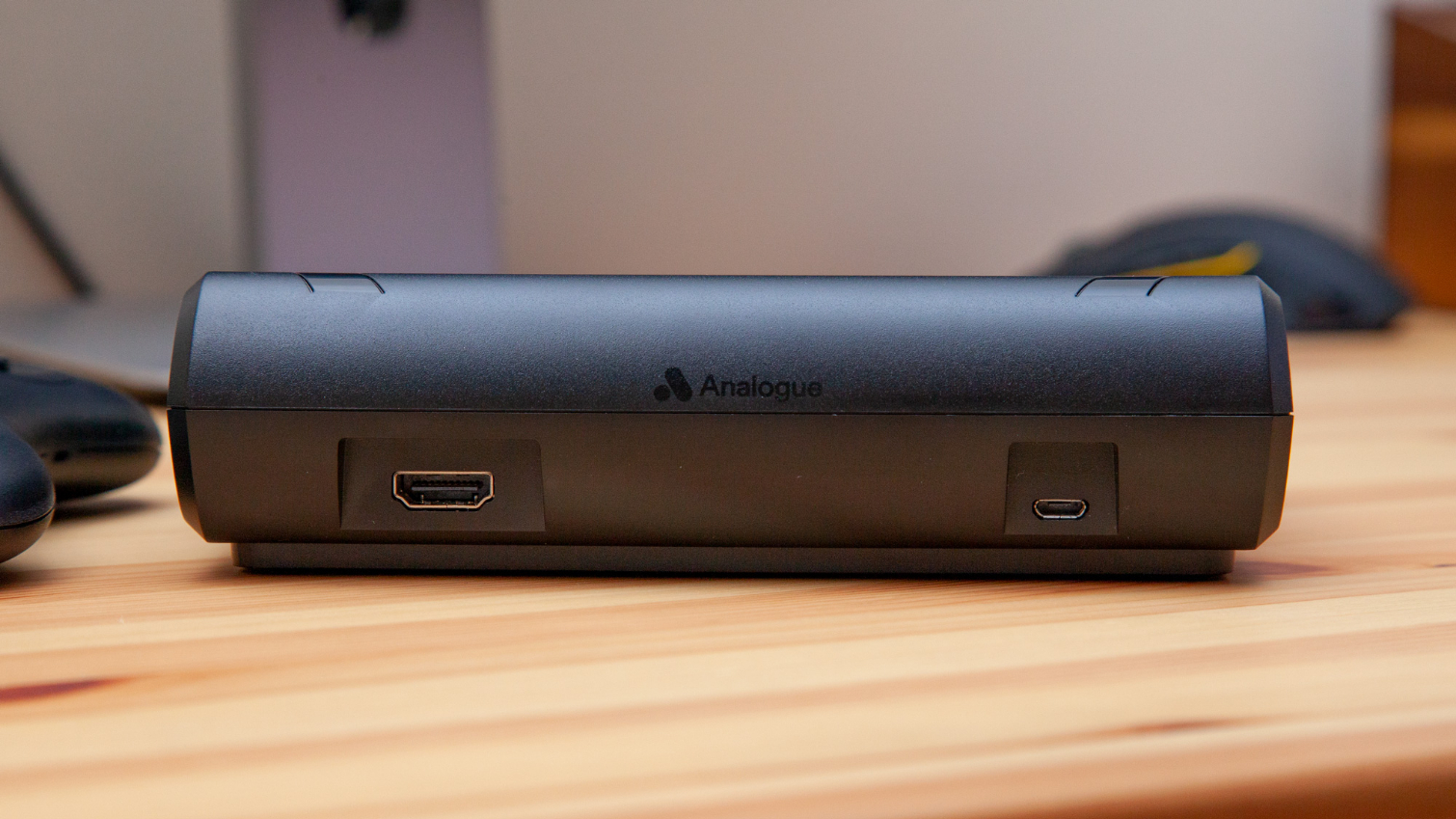
It's clear that a lot of attention was paid to the Mega Sg's industrial design, including its colorways. Buyers have four options to choose from, three of which are primarily black but mimic the Genesis' trim in each of the regions in which it was sold. The USA variant mixes red and gray, the EU version opts for a monochrome look and JPN goes for the thoroughly '90s red-and-purple motif the Mega Drive adopted in its home market. There's also a completely white option, and Analogue's accessory partner 8BitDo offers a white version of its M30 wireless pad to complete the look.
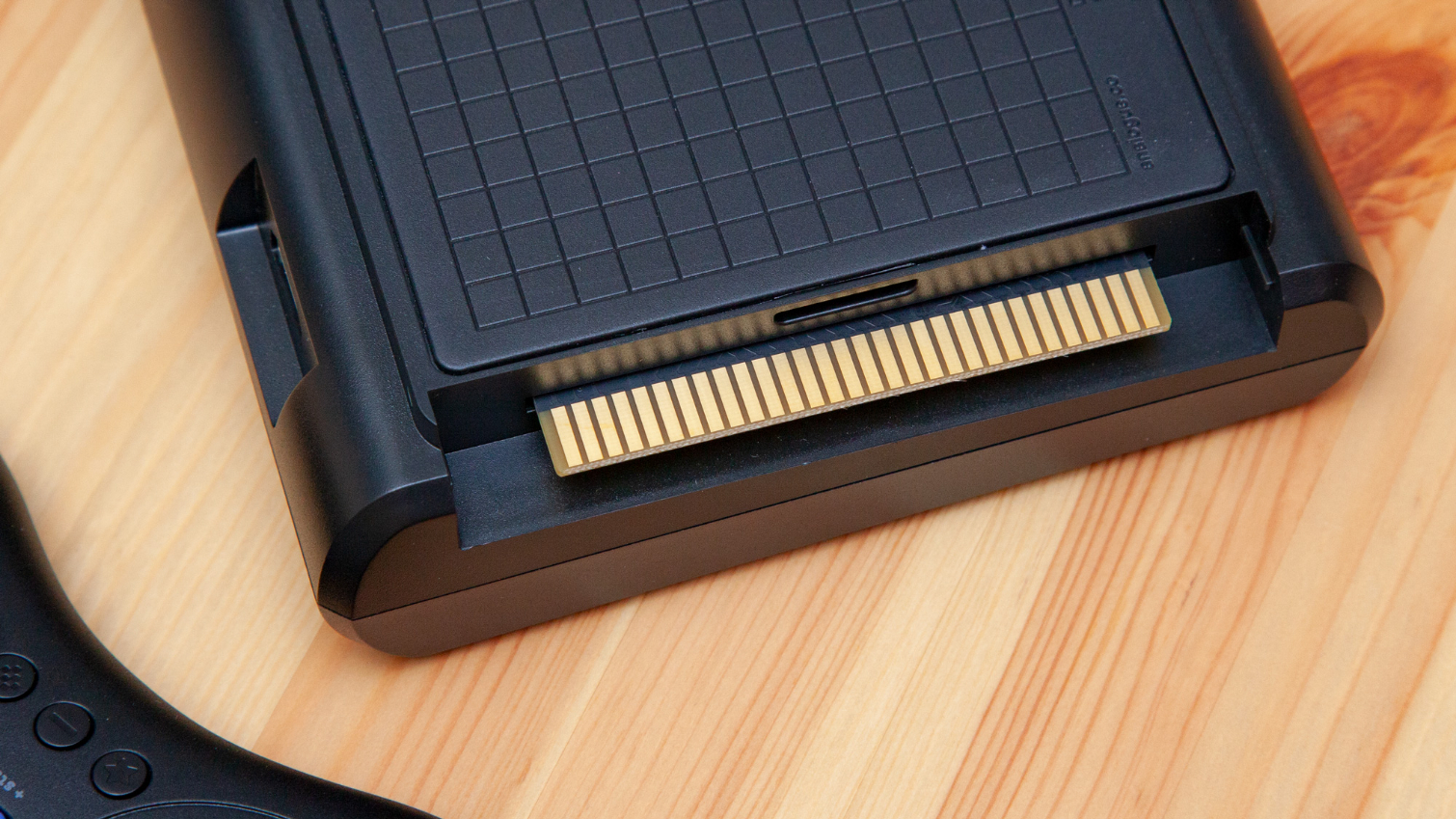
Purists will appreciate Analogue's inclusion of a headphone jack at the front of the Mega Sg — a feature the new console shares with the one that inspired it. There's also a door on the lower-right side that conceals the Sega CD connector. The Mega Sg is compatible with both the bottom-loading, first-generation disc drive as well as the sidecar-style, second-gen design.
Better nostalgia through engineering
Pry open the Mega Sg and Super Nt side by side, and you likely couldn't tell them apart. That's because the Mega Sg uses the same Altera Cyclone V field-programmable gate array (FPGA) as Analogue's last system, only this one has been re-engineered to act like the Genesis' Motorola 68000 CPU, Zilog Z80 coprocessor and Yamaha YM2612 sound chip.
If you're not familiar with how an FPGA works, it's essentially a circuit board that can be configured at the lowest level to mimic the inputs and outputs of any other circuit board. This is different from the approach taken by most retro hardware makers, which use general-purpose processors — not unlike what you'd find in a smartphone or tablet — and rely on emulation software as an intermediary.
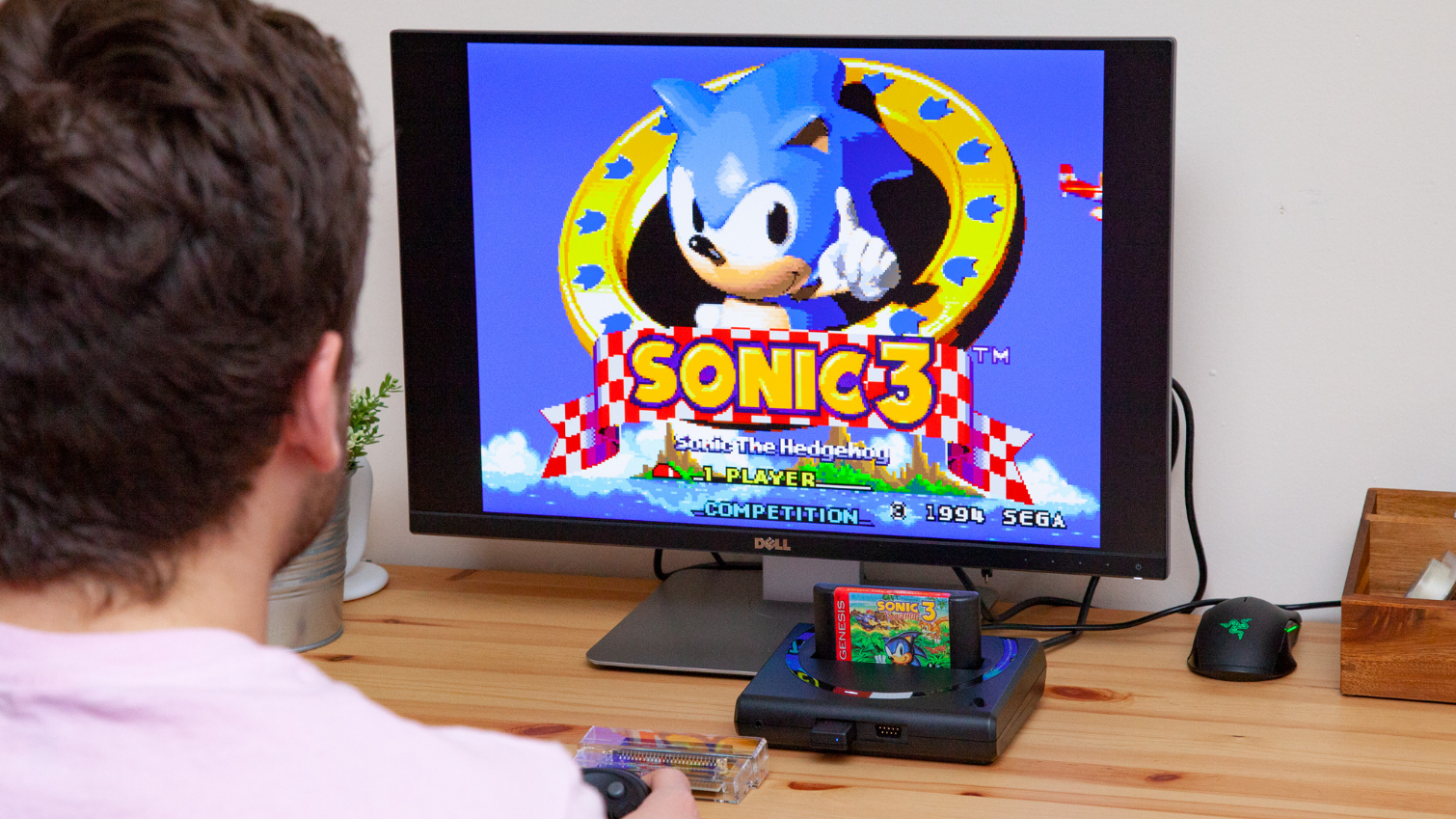
The problem with emulation is that it can yield inconsistent results on a game-by-game basis, and the experience can be miserable if the software isn't up to the task. You needn't look further than Nintendo's and Sony's respective retro consoles for examples of emulation done properly (SNES Classic) and poorly (PlayStation Classic). And all of the third-party re-releases of Sega's 16-bit hardware to date, which have been peddled by the infamous AtGames label, have been some of the worst offenders in the market.
The Mega Sg's real advantage lies in its versatility — it boasts full, consistent compatibility with the entire Genesis library.
However, none of these concerns applies to the Mega Sg. Because the Analogue's FPGA was designed to function as a spitting image of Sega's componentry, the Mega Sg runs Genesis titles with unparalleled accuracy. Theoretically, it's the most faithful experience you can have playing Genesis games today — short of using the original hardware, of course.
MORE: The 20 Best Sega Games of All Time
Hardcore retro enthusiasts have already romanticized the implications of the FPGA approach with respect to sequence-perfect clock cycles, elimination of lag and authentic sound rendering. But for most people, the Mega Sg's real advantage lies in its versatility. Analogue's box boasts full, consistent compatibility with the entire Genesis and Mega Drive libraries and allows you to run those games at up to 1080p resolution on a modern TV.
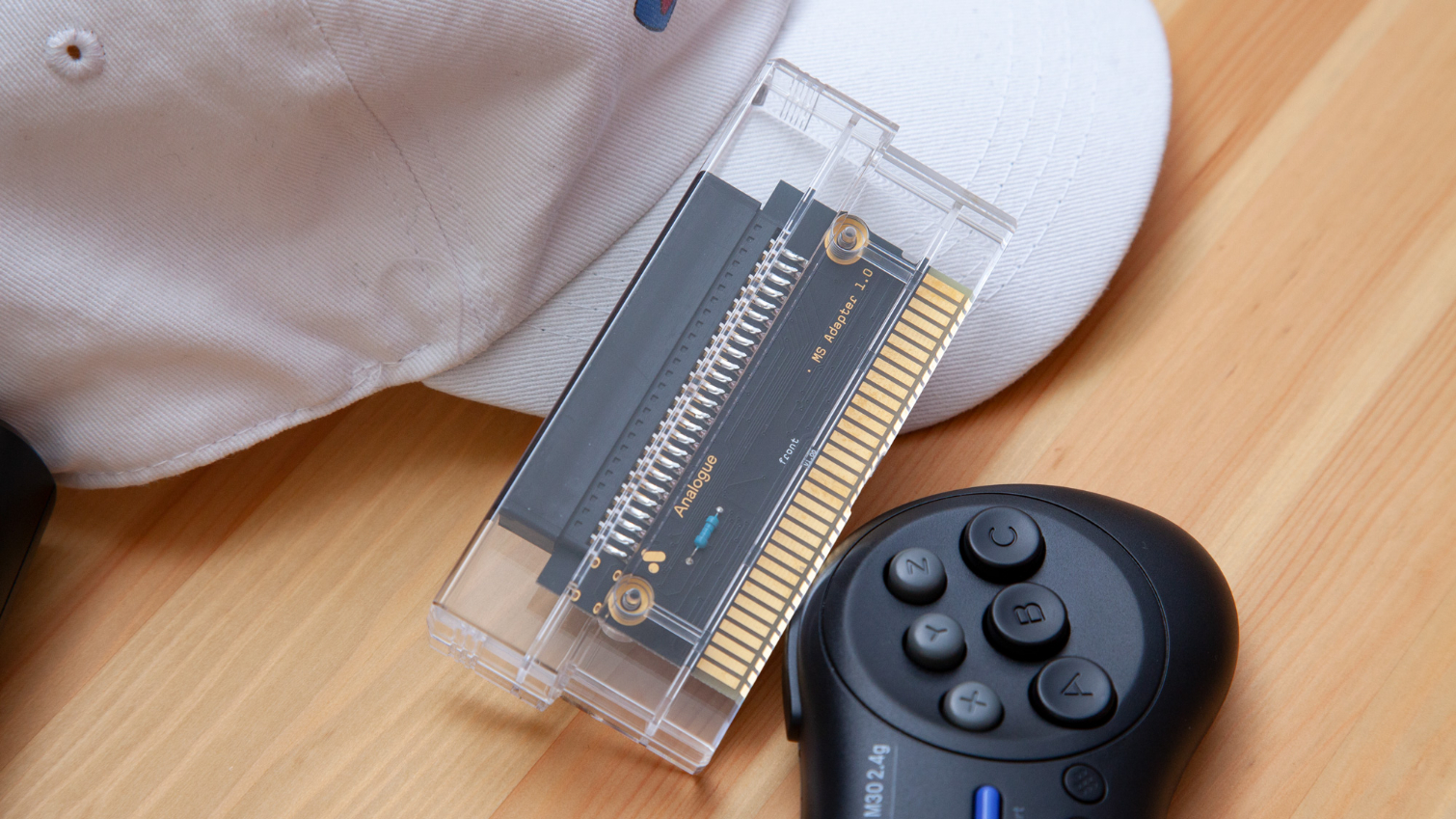
The Mega Sg also plays nice with imports and supports the full range of Sega's weird, one-off cartridges that materialized over the Genesis' long lifespan. I was able to relive the glory days of Lock-On Technology with Sonic 3 & Knuckles — and demonstrate that my mastery of Blue Sphere hadn't faded in the process. Even the SVP chip-aided port of Virtua Racing, with its double-tall cartridge, works perfectly in the Mega Sg. It was an awful way of playing Virtua Racing a quarter century ago, and you'll be pleased to know it's just as janky on the Mega Sg.
There are a few caveats worth noting, however. Sega's Menacer light gun won't work over the Mega Sg's HDMI connection — light guns require CRT displays. Additionally, while the Mega Sg works with Sega CD and can run Master System games with the use of an included adapter, Sega's 32X add-on is incompatible with Analogue's console for a variety of complex technical reasons that we won't get sidetracked with here. (That could change if Analogue decides to release a 32X FPGA add-on — an idea the company has publicly floated in the past — but there's no guarantee that will happen.)
Limitless options (and a lost gem)
If Analogue had released a hi-res Genesis with an HDMI-out and stopped there, most customers probably would have been satisfied. But the Mega Sg goes further, with menus upon menus of tweakable settings, special effects that make your old favorites look better than they ever have, and yes — even an unreleased game.
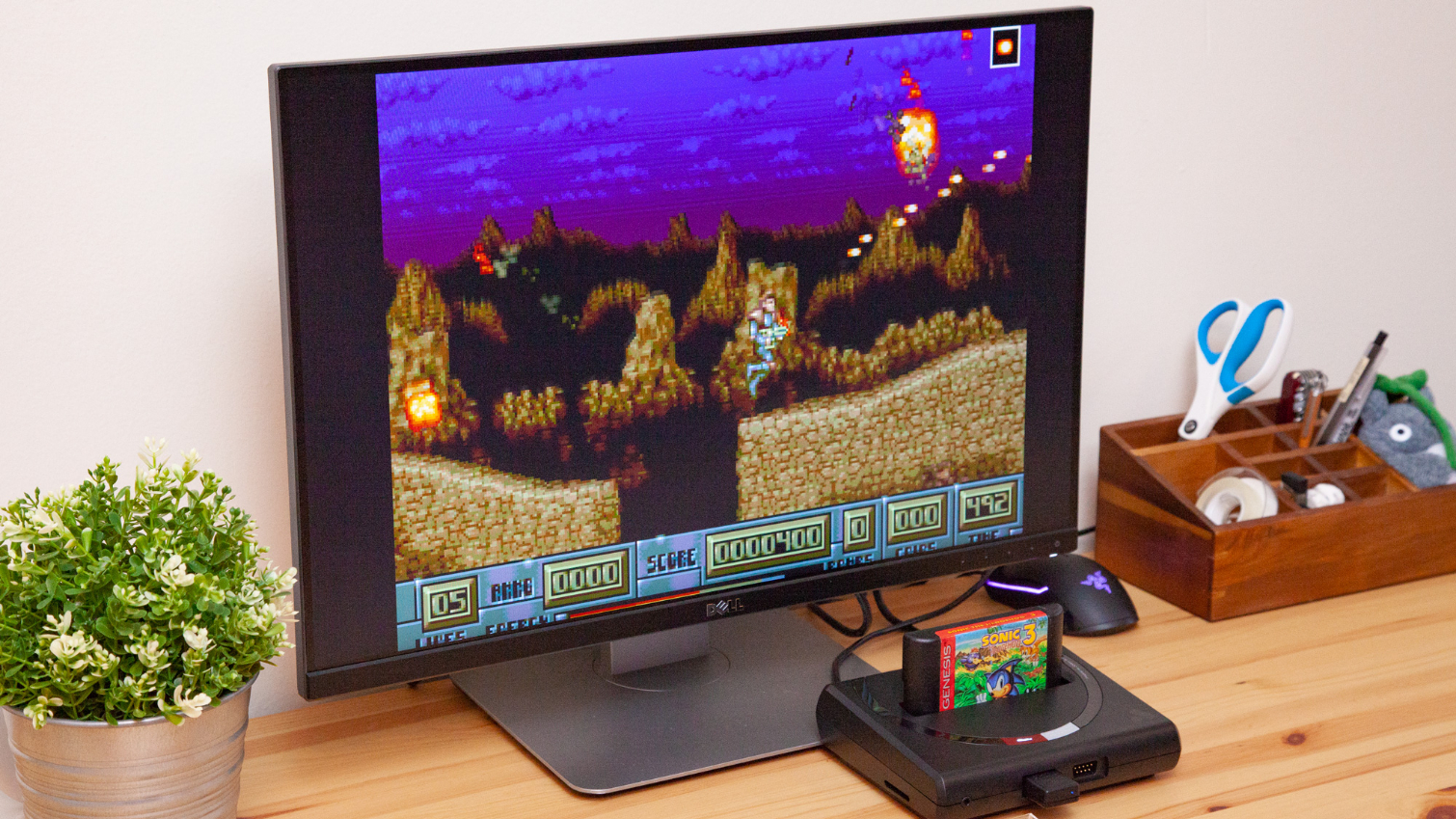
That game is called Ultracore. Developed by Digital Illusions and ready to be pressed in 1994, the run-and-gun shooter was shelved at the last minute by publisher Psygnosis out of fear it would fail in a market ready to move onto polygons.
If that sounds familiar, those are essentially the same conditions that doomed the 1995 release of Star Fox 2, which finally appeared on the SNES Classic 22 years later. Similarly, Ultracore comes preloaded onto every Mega Sg, and it happens to be a surprisingly polished and fluidly animated, Contra-style space odyssey.
MORE: Nintendo Switch vs. PS4 vs. Xbox One: Which Console Should You Get?
The Mega Sg's system interface deviates very little from the Super Nt's. That's a good thing, though, thanks to Analogue's decision to task Fez designer Phil Fish with heading up the Super Nt's stylish graphical aesthetic. Within those menus, you'll find a range of resolution and frame-rate options — the latter of which will certainly be useful for playing 50-Hz PAL titles on modern sets, which run at faster refresh rates.
Ultracore is a surprisingly polished and fluidly animated Contra-style space odyssey.
Analogue allows you to get as particular as you'd like with the settings, from scan-line spacing to the extent of the system's audio capabilities. By default, it plays back sound at a richer depth than the original Genesis could manage, though if you want to limit your ears to the constraints of 1991, the hardware gives you that prerogative. (But you really, really shouldn't — you owe it to yourself to hear Chemical Plant Zone at its fullest and most detailed.)
One of my favorite features on the Mega Sg is tucked away within the system's advanced display settings. Called dither blending, it softens checkerboard-pattern pixels the way CRT televisions would, to create smoother gradients and transparency effects without a significant hit to overall sharpness. I found it definitely helped me overcome the eye strain "clean" pixels give me in certain titles, and I highly recommend checking it out in tandem with the scan-line feature for the full retro effect.

The only gripes I have with the Mega Sg are really carried over from the Super Nt before it. In keeping with Analogue's penchant for authenticity, the Mega Sg doesn't allow save states. As someone who made frequent use of the feature on the SNES Classic to get through some of that platform's notoriously tough side scrollers, this absence certainly wasn't lost on me.
MORE: 19 Games We Can't Wait to Play in 2019
The Mega Sg also makes no provisions for playing games digitally. While there is an SD card slot on the side of the machine, it's meant exclusively for applying firmware updates. There are methods of dubious legality to get around this, of course, using custom-made cartridges that essentially function as external drives. Ultimately, none of this is Analogue's problem, but the fact is that retro gaming is in vogue now and copies of classic games — regardless of rarity — command higher prices than they ever have in the past. If the Mega Sg's price has you a bit shaken, just wait until you try to get your hands on an authentic copy of Castlevania Bloodlines.
A great controller (for a fee)
Unfortunately, Analogue doesn't pack a controller in the box with the Mega Sg. That's a shame, both because the system is already $189, and because the controller Analogue recommends — the 8BitDo M30 — is really, really nice.
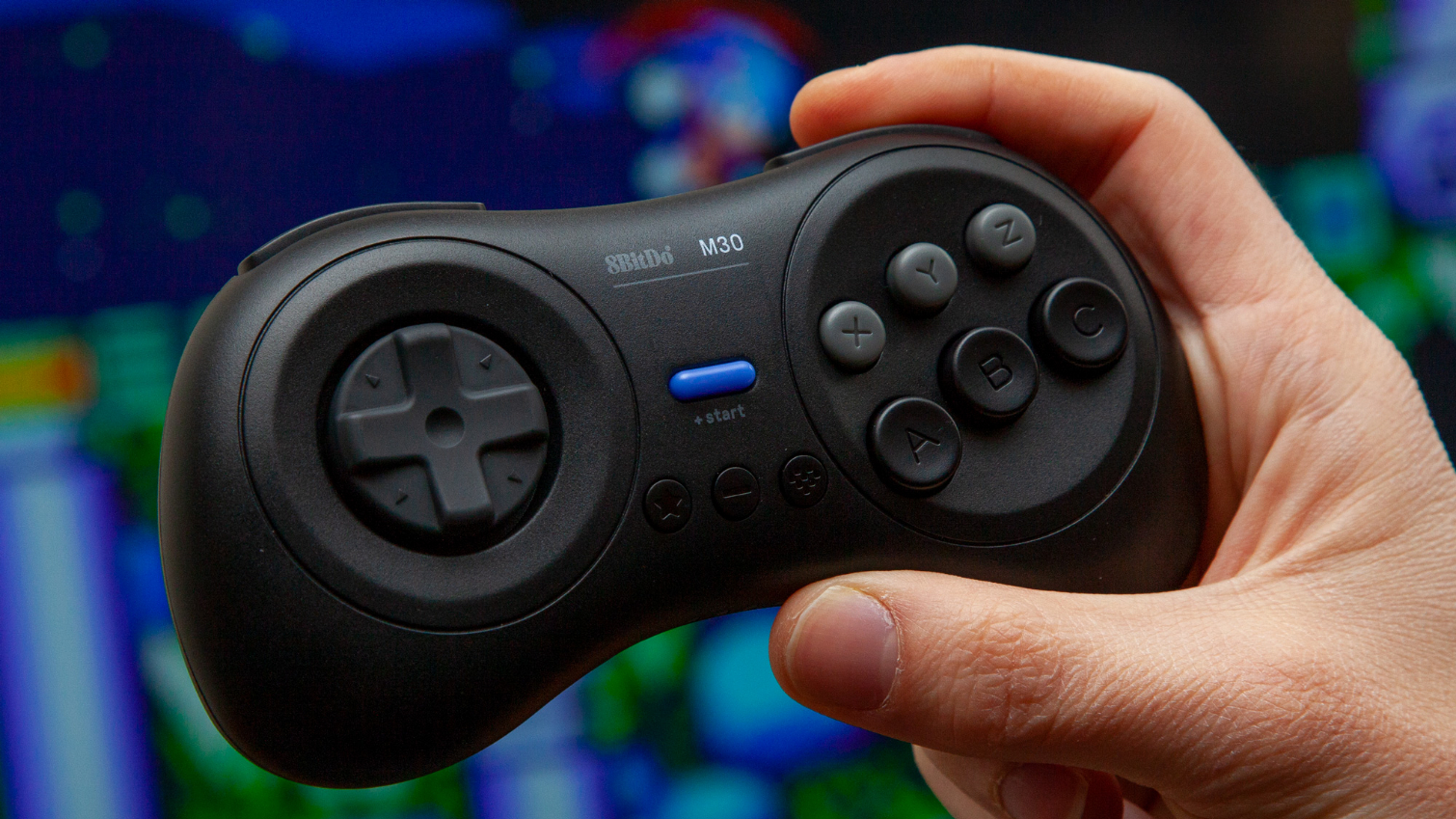
The M30 is similar to the classic six-button Genesis pad that released later in the system's life, except it has left and right shoulder buttons that weren't present on the original as well as three extra buttons below the Start button for things like turbo functionality. It's a beautiful, sturdy and thoroughly comfortable pad — perhaps the best that 8BitDo's ever made — and it comes in both Bluetooth and 2.4-GHz flavors.
MORE: The Best Bluetooth Controllers for Mobile, PC and Consoles
The 2.4-GHz M30 comes with a dongle that plugs into one of the Mega Sg's controller ports, which are the very same ports the Genesis employed. At $24.99, it's a much more reasonable price than the combined $39.99 pairing of the Super Nt's SN30 Bluetooth pad and receiver. Alternatively, you could just use an actual Genesis controller or a third-party equivalent, like Retro-Bit's just-launched, Sega-backed official reproductions.
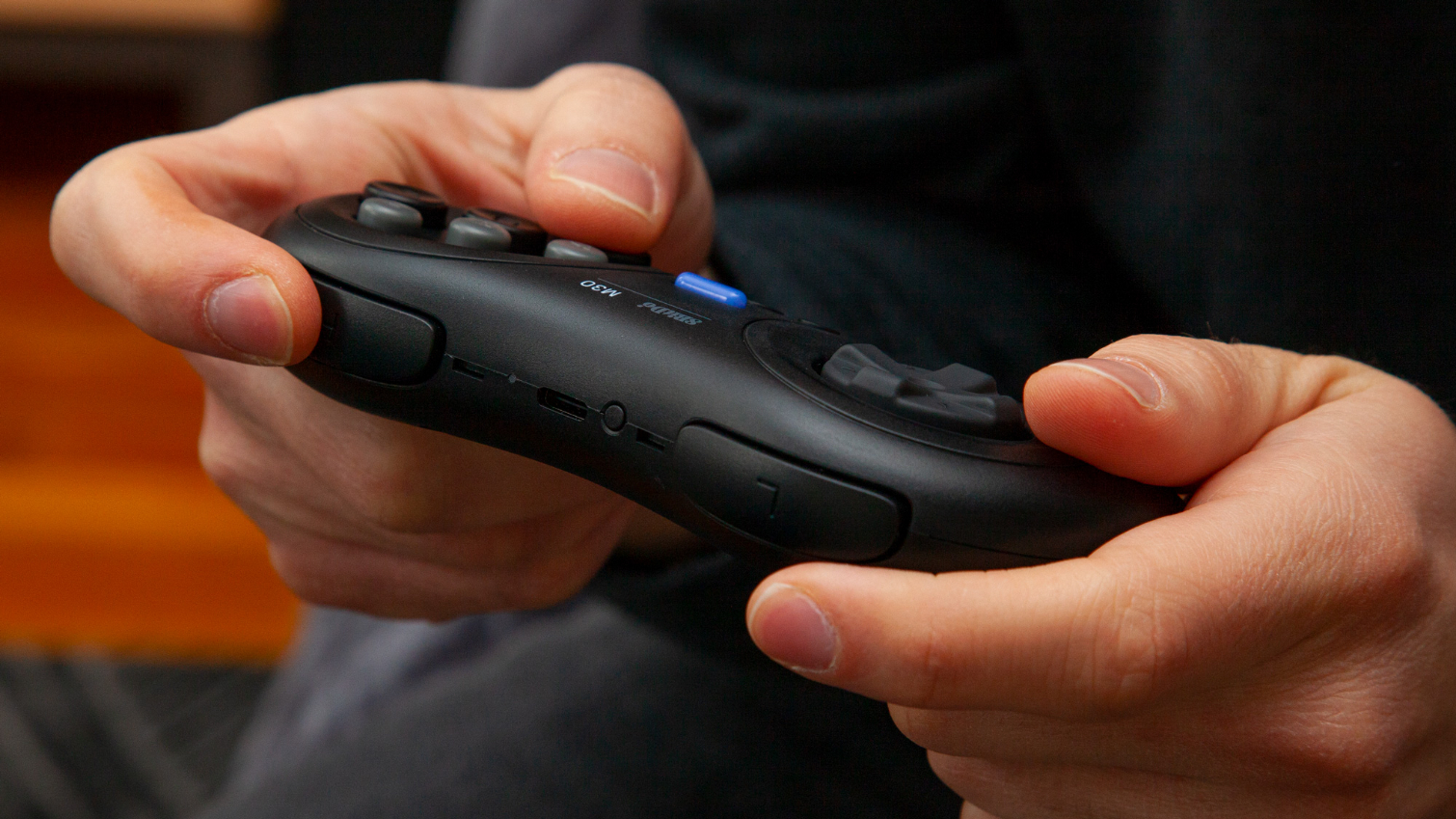
Analogue plans on expanding the Mega Sg's capabilities later in the year with cartridge adapters that will allow it to play titles from Sega's other 8- and 16-bit systems, including the Sega Mark III, Game Gear and SG-1000. The company says these will run $10 a pop, which is very reasonable, considering many of Sega's other 2D platforms either never caught on outside Japan or weren't offered in the West at all.
Bottom Line
There are cheaper and more accessible avenues for reliving Sega's 16-bit glory years than the Mega Sg. But then again, that's not really the purpose of Analogue's system.
Rather, the Mega Sg gives the Genesis the high-fidelity counterpart it always deserved. If you're tired of knockoff plug-and-play consoles of mysterious origin, or even Sega's mediocre Genesis Classics collections, Analogue's box is for you. Retro aficionados will love the astonishing accuracy it achieves, but no matter who you are, the upshot is the same: the Mega Sg is the finest, most convenient way to play Sega Genesis on a modern TV.
That privilege admittedly comes with a hefty price tag. $189 is far more than most would be willing to spend on a box to play 30-year-old games, especially when some of those titles are being re-released to take advantage of modern hardware, a la the Sega Ages series. Add to that the frustration of rising secondhand game prices and the inevitable degradation of physical media, and Analogue's accomplishments here — impressive though they are — are unfortunately somewhat obscured by circumstances beyond the company's control.
Still, if you're one of the lucky few who never parted with your dusty old cartridges or are building a collection now, the Mega Sg will reward you with an incomparable experience. And if you consider yourself a Sega fan, well, your retro renaissance has finally arrived.
Credit: Tom's Guide
Adam Ismail is a staff writer at Jalopnik and previously worked on Tom's Guide covering smartphones, car tech and gaming. His love for all things mobile began with the original Motorola Droid; since then he’s owned a variety of Android and iOS-powered handsets, refusing to stay loyal to one platform. His work has also appeared on Digital Trends and GTPlanet. When he’s not fiddling with the latest devices, he’s at an indie pop show, recording a podcast or playing Sega Dreamcast.
